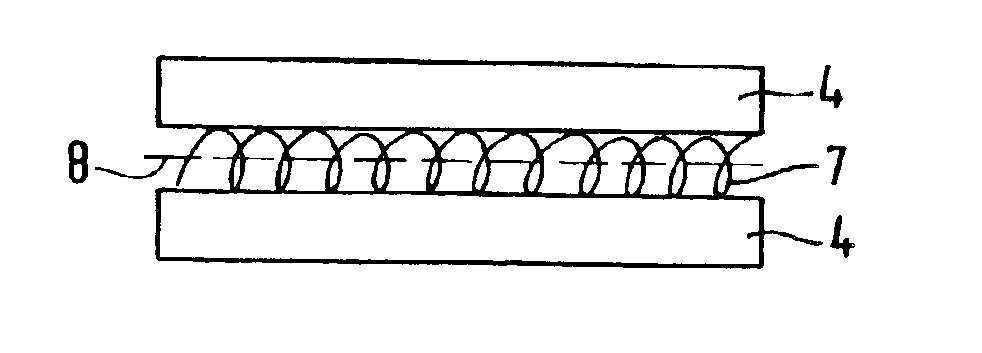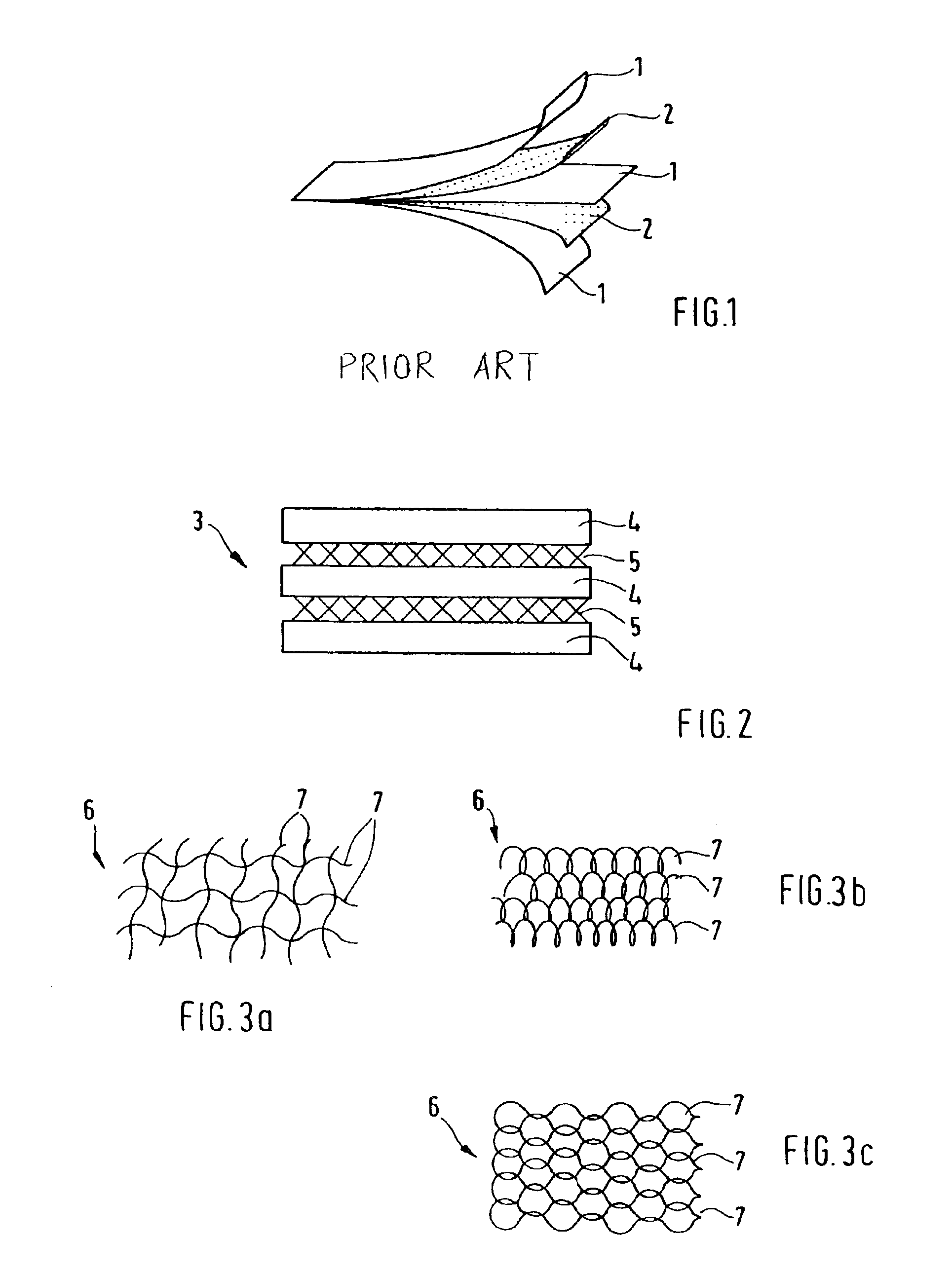Metal fiber-reinforced composite material as well as a method for its production
a technology of reinforced composite materials and metal fibers, which is applied in the direction of transportation and packaging, protective equipment, chemical instruments and processes, etc., can solve the problems of increased danger, low shear strength, and high danger of delamination, and achieves simple and effective procedures.
- Summary
- Abstract
- Description
- Claims
- Application Information
AI Technical Summary
Benefits of technology
Problems solved by technology
Method used
Image
Examples
Embodiment Construction
Formation of a Metal Fiber-Reinforced Composite Material
A typical aluminum alloy sheet for aviation is constructed from three layers of sheet aluminum 4 as well as from two reinforcing layers 5. Before they are rolled, the layers of sheet aluminum have a thickness of 4 mm and the reinforcing layers have a thickness of about 0.5 mm so that the composite has a total thickness of about 13 mm. After the rolling, the metal fiber-reinforced composite material has a thickness of approximately 6.5 mm. The reinforcing layers may be disposed at any place within the sandwich structure. FIG. 6 shows a component of the inventive composite material with a step-shaped surface, the thin side surface “a” having a height of about 1.5 mm and the thick side surface “b” a height of about 5 mm. The reinforcing layer “X” is disposed at the bottom, so as not to interfere with the step-shaped processing of the composite. Accordingly, it is possible to construct any tailor-made composite material.
With the he...
PUM
| Property | Measurement | Unit |
|---|---|---|
| Strength | aaaaa | aaaaa |
Abstract
Description
Claims
Application Information
 Login to View More
Login to View More - R&D
- Intellectual Property
- Life Sciences
- Materials
- Tech Scout
- Unparalleled Data Quality
- Higher Quality Content
- 60% Fewer Hallucinations
Browse by: Latest US Patents, China's latest patents, Technical Efficacy Thesaurus, Application Domain, Technology Topic, Popular Technical Reports.
© 2025 PatSnap. All rights reserved.Legal|Privacy policy|Modern Slavery Act Transparency Statement|Sitemap|About US| Contact US: help@patsnap.com



